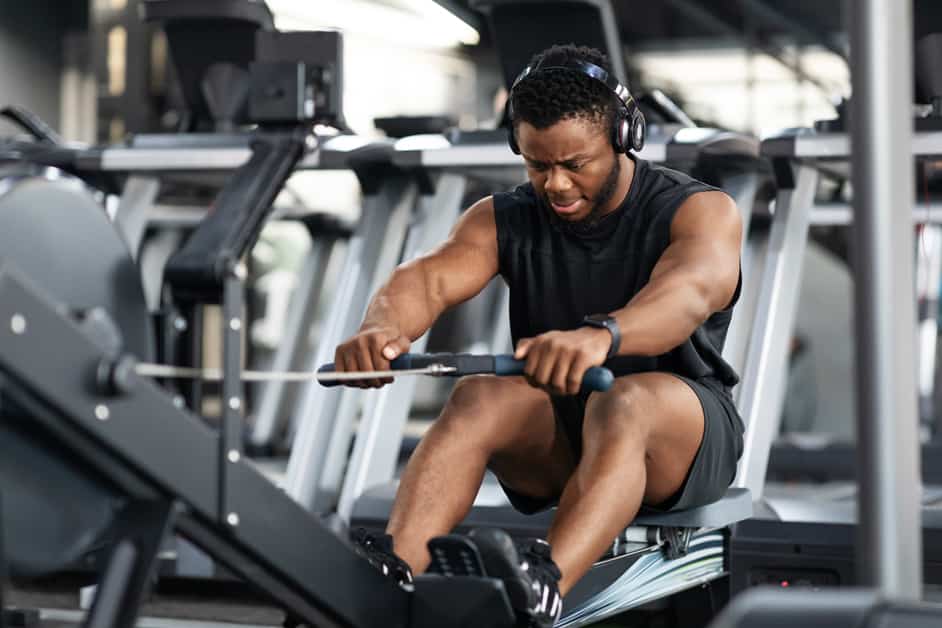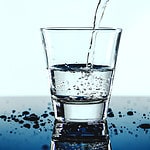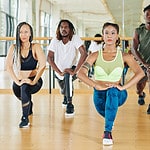Introduction
Rowing machines make awesome exercise gear! They’re low impact, yet they offer a great workout. Perfect for people with a knee injury looking to rehabilitate.
Let’s check out the various advantages of using a rowing machine for knee rehabilitation. It’s time to get fit and healthy!
What is a rowing machine?
A rowing machine, commonly called an “ergometer,” is a fitness machine that lets you exercise while seated in a safe spot. It’s become very popular with athletes, those wanting a good form of exercise, and people recovering from injuries or surgery.
Rowing machines work by applying resistance to the user’s movements (pushing against a flywheel). This way, you can workout without needing to lift weights or go outdoors. This is ideal for those who can’t move around much, such as post-surgery patients. Plus, most rowing machines can be adjusted to accommodate different levels of intensity.
Using a rowing machine is gentle on the joints, particularly the knees, so it’s great for post-operation rehab programs. It also activates all muscle groups, making it an effective full body workout. Plus, rowing machines can help you burn up to 600 calories per hour based on your intensity!
Benefits of using a rowing machine
A rowing machine is a great option for those looking to get a low-impact, full-body workout. It strengthens the heart and lungs and helps with knee rehabilitation. It also increases muscular strength in both the upper and lower body. Plus, it has the added benefit of being easy on the joints.
Rowing is more effective than running or cycling at burning calories and toning muscles. As it involves both pushing and pulling, it builds muscle strength and endurance. It also helps improve agility and balance. Plus, the smooth movement of the seat reduces impact on the joints.
Using a rowing machine is an ideal way to recover from injury while still getting a great workout. After strengthening muscles with a rower, users will find physical activities like hiking and sports even more enjoyable!
Knee Rehabilitation
Rowing machines are great for knee rehab! Low impact and adjustable resistance settings make them ideal. For decades, they’ve been used to rehab various injuries. They help strengthen muscles and improve range of motion. Here’s why rowing machines make for excellent knee rehabilitation!
How does rowing help with knee rehabilitation?
Rowing is an ideal way to rehabilitate your knees from an injury or surgery. It’s low-impact and strengthens the muscles around the knee. It also helps to increase flexibility in the joint. If done properly, rowing can help with coordination, balance, and strength.
It combines both aerobics and resistance. This puts the lower body muscles through a wide range of motion – and not only helps to build strength, but also increases joint stability by activating stabilizing muscles around the knee joint. Through rehabilitative rowing exercises, you can regain your full range of motion, gradually increasing resistance as you progress.
Rowing helps to strengthen the quadriceps, while stretching it safely. Stronger quads can reduce inflammation in the knee joint, and ligaments can heal quicker when surrounded by strong supporting muscles. A strong quadriceps can also reduce pain and discomfort.
Finally, rowing helps to improve coordination and balance – two key components of any successful rehabilitation program for an injured knee. Being able to row with the right technique will help you perform daily movements with more confidence, and this will speed up your recovery.
What muscles does a rowing machine work?
Rowing machines, also known as ergometers, are a great way to condition muscles and cardiovascular endurance. They simulate the action of rowing a boat and work almost all major muscle groups in the body.
Legs, arms, back, abs, glutes and shoulders are all used each time you pull the handlebar towards your abdomen. The drive of extending the legs engages the quadriceps and gluteal muscles. Core abdominal muscles are used to keep proper form throughout each stroke.
Shoulder muscles work together with the other muscles during each stroke on a rowing machine. Pulling and pressing movements are continually alternating throughout each stroke which engages all major muscle groups at once.
What safety considerations should be taken when using a rowing machine?
Safety is key when using exercise equipment, especially for rehab. Rowing machines take practice. Injuries can happen when form or intensity is wrong. Follow these tips for safe rowing:
- Warm up with gentle stretching;
- Upright posture, pulled down and back shoulders;
- Smooth, coordinated, rhythmical movements;
- No extreme force unless told by a professional;
- If muscles are tired, reduce intensity, not form;
- Listen to advice from professionals about knee rehab form.
Proper Form
Rowing on a machine is a great way to get your heart rate up. It’s also used for knee rehab. It’s important to do it right. To reap the benefits and stay safe, follow these steps:
- Learn the proper form for machine rowing.
How to set up the rowing machine
Gettin’ the greatest benefit from a rowing machine? Follow proper form! Sit near the front of the seat, grasp the handle with both hands. Legs should be long and straight – keep your heels in contact with the foot pads. Feet firmly against the footrests, toes pointed slightly outward. Lean back until upper body is slightly reclined and back is nearly straight. Keep constant tension in the lower abdominal muscles.
Lightly grip the handle with both hands, use a smooth movement to propel yourself away from start position towards finish position. This’ll benefit every part of the stroke, and protect against injury from jerky motions or excess tension. Mentally divide each stroke into four parts: catch (beginning), drive (middle), finish (end), and recovery (return).
Good breathing technique at all times: inhale as you extend away, exhale as you come back down to start position. Even energy distribution throughout each cycle!
How to properly use the rowing machine
Using the rowing machine correctly is important for many reasons. It needs coordination of multiple body parts and good form ensures a secure and successful workout. Plus, a proper posture boosts muscle response, so you reach your goals quickly.
To get proper form and make the most of your workout:
- Keep your shoulders back – never rounded forward
- Arch your back slightly and make sure it’s supported with a strong core
- Engage your arms and keep them close to your body when pulling back
- Lead with your elbows when pulling and push away from your legs while driving forward
- Let your legs do most of the work, pushing explosively to launch yourself backwards
- When you’re done, make sure all movement has stopped before you get off the equipment.
Combining correct posture and technique with these tips lets you be both efficient and safe when using a rowing machine. Being aware of each move helps you connect with your workouts and brings greater rewards for staying healthy – physically and mentally.
What are the common mistakes when using a rowing machine?
When using a rowing machine, be aware of common mistakes. Pay attention to form and technique to get the most out of your workout and avoid injury.
- Position your feet firmly on the foot plates.
- Set the resistance to match your fitness level. Increase the challenge as your strength improves.
- Remember to keep a tall spine with hips hinging back and a small curve in your lower back when getting off the seat. Move with purpose and control. Don’t move too quickly or jerk around.
Stay hydrated with water. Pay attention to correct breathing. Inhale deeply before pushing away from the chest plate. Exhale steadily even throughout as you pull towards it. This helps oxygenated blood sustain muscle action.
Conclusion
To sum up, rowers are awesome cardio for those rehabbing from knee injuries. Low impact, it boosts the muscles around the joints plus the entire body. It gives you a great cardiovascular workout while being kind to the joints. It’s also perfect for building strength, endurance and flexibility whilst improving coordination. Its low-risk of injury and plentiful advantages make it a superior choice for those recovering from knee injuries.
Summary of the benefits of using a rowing machine for knee rehabilitation
Rowing machines are ideal for those with knee issues or injuries. The rowing movement works leg muscles, is low impact on the knees, and increases range of motion. It’s a great cardio exercise that helps strengthen and stretch muscles in both upper and lower body, while maintaining flexibility.
Using a rowing machine provides physical health benefits. But, talk to your doctor if you have knee concerns before beginning any rehab program. Physical therapists often recommend incorporating a rowing machine into regimens. It can improve strength, coordination, and physical ability in patients with various knee issues. Plus, regular rowing helps reduce inflammation around the joint for improved comfort and reduced pain.
In conclusion, using a rowing machine during rehab can help those with knee problems or recovering from injuries. It’s versatile fitness equipment that offers something for everyone wanting to improve overall health and give their knees some attention!
Tips for getting the most out of a rowing machine workout
When using a rowing machine for knee rehab, get the most out of your workout. Here’s how:
- Start slowly. Low resistance is best. Take breaks and don’t overdo it.
- Adjust ergonomic settings. Seat back and thigh length should be adjusted for good support and painless movement.
- Verify proper form. Core engaged, hips pushed back, shoulders down, abdominals tightened. To avoid injury use correct form.
- Eliminate distractions. Listen to music or watch a show, but stay focused on each stroke. Don’t let noise break concentration.
- Utilize data tracking devices. Rowing machines often have features that help track performance. Measure progress with each session.
Frequently Asked Questions
Q1: Is rowing machine a good exercise for knee rehabilitation?
A1: Yes, rowing machine is a great low-impact exercise that is highly effective for knee rehabilitation. It strengthens the muscles around the knee and can help improve range of motion and reduce pain.
Q2: How often should I use the rowing machine for knee rehabilitation?
A2: It is recommended to use the rowing machine at least three times a week to get the most benefit from it. It’s important to start slow and gradually increase your intensity as your knee improves.
Q3: What other exercises can I do to help with knee rehabilitation?
A3: In addition to rowing, other low-impact exercises such as swimming, yoga and cycling can also be beneficial for knee rehabilitation. It’s important to consult with your doctor or physical therapist to create a personalized exercise plan that is right for you.





